http:blog.csdn.netzhoujianghaiarticledetails8145015学习cocos2d-x中的菜单主要需要了解:菜单(CCMenu)和菜单项(CCMenu http://blog.csdn.net/zhoujianghai/article/details/8145015 学习cocos2d-x中的菜单主要需要了解:菜单
http:blog.csdn.netzhoujianghaiarticledetails8145015学习cocos2d-x中的菜单主要需要了解:菜单(CCMenu)和菜单项(CCMenu
http://blog.csdn.net/zhoujianghai/article/details/8145015
学习cocos2d-x中的菜单主要需要了解:菜单(CCMenu)和菜单项(CCMenuItem)以及CCMenuItem的具体子类。a. 下面来学习一下相关的类。1. CCMenu
菜单,是CCLayer的子类,是一个层(容器),可以往里面添加菜单项。下面是它的类结构图:
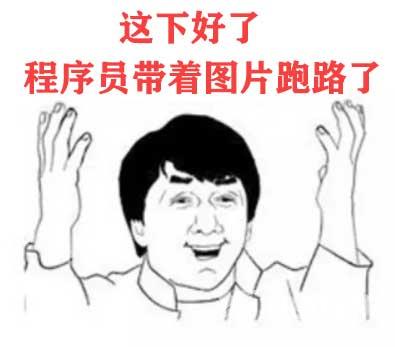
CCMenu默认接受触屏事件的优先级是-128(优先级很高,因为值越小,响应触屏事件的优先级越高),可以通过继承它实现自定义的效果,创建CCMenu对象的函数:
[cpp]view plaincopy
staticCCMenu*menuWithItems(CCMenuItem*item,...); staticCCMenu*menuWithItem(CCMenuItem*item); 2. CCMenuItem菜单项,开发中一般是直接使用它的子类。CCMenuItem有三个直接子类:CCMenuItemLabel(字符标签菜单)、CCMenuItemSprite(图片菜单)、CCMenuItemToggle(开关菜单)。下面是CCMenuItem的类结构图:
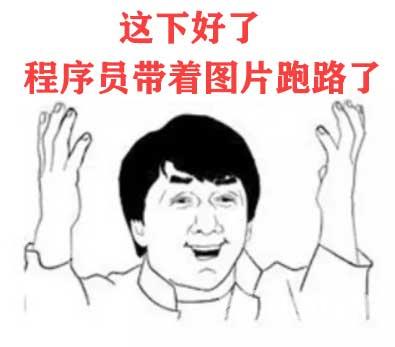
现在分别来了解一下各个不同的菜单项。(1) CCMenuItemLabel:使用文字标签创建菜单项所有支持CCLabelProtocol的节点都可以用来创建CCMenuItemLabel,CCLabelProtocol是标签的共同接口。CCLabelProtocol也有三个直接子类,下面是类结构图:
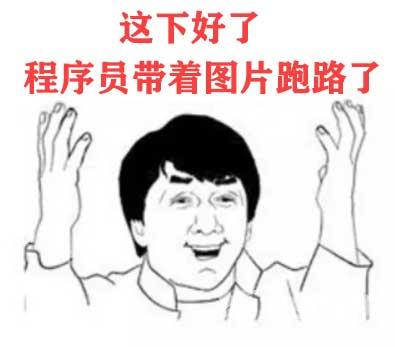 CCLabelTTF:同时也是CCSprite的子类,用来渲染文字标签的,可以指定字体,每次设置字符串内容时都需要重新创建纹理和渲染,性能不好,可以看它的相关源码:
CCLabelTTF:同时也是CCSprite的子类,用来渲染文字标签的,可以指定字体,每次设置字符串内容时都需要重新创建纹理和渲染,性能不好,可以看它的相关源码:
[cpp]view plaincopy
voidCCLabelTTF::setString(constchar*label) { if(m_pString) { deletem_pString; m_pString=NULL; } m_pString=newstd::string(label); CCTexture2D*texture; if(CCSize::CCSizeEqualToSize(m_tDimensions,CCSizeZero)) { texture=newCCTexture2D(); texture->initWithString(label,m_pFontName->c_str(),m_fFontSize); } else { texture=newCCTexture2D(); texture->initWithString(label,m_tDimensions,m_eAlignment,m_pFontName->c_str(),m_fFontSize); } this->setTexture(texture); texture->release(); CCRectrect=CCRectZero; rect.size=m_pobTexture->getContentSize(); this->setTextureRect(rect); } 可以用CCLabelBMFont或者CCLabelAtlas代替它。CCLabelBMFont:也是CCSpriteBatchNode的子类,创建CCLabelBMFont对象需要一个字符串和一个fnt格式的文件(字库),如:[cpp]view plaincopy
CCLabelBMFont*label=CCLabelBMFont::labelWithString("BitmapFontAtlas","fonts/bitmapFontTest.fnt"); 这个fnt文件包含了这些信息:对应图片的名字(图片包含了所有你要绘制的字符)、图片中的字符对应的unicode编码、字符在图片中的坐标、宽高等。初始化CCLabelBMFont对象时,会把图片添加到缓存(CCTextureCache)中,解析fnt文件,把fnt文件中对应的信息保存到一个ccBMFontDef类型的数组里面,数组的索引是charId(字符的unicode编码值),ccBMFontDef是一个结构体:[cpp]view plaincopy
typedefstruct_BMFontDef{ //!IDofthecharacter unsignedintcharID; //!originandsizeofthefont CCRectrect; //!TheXamounttheimageshouldbeoffsetwhendrawingtheimage(inpixels) intxOffset; //!TheYamounttheimageshouldbeoffsetwhendrawingtheimage(inpixels) intyOffset; //!Theamounttomovethecurrentpositionafterdrawingthecharacter(inpixels) intxAdvance; }ccBMFontDef; 绘制字符串时,根据字符对应的unicode码去查找ccBMFontDef信息,从缓存中取出图片,再根据ccBMFontDef中坐标、宽高取出对应区域的字符图片,把字符在字符串中的索引位置作为tag添加到CCLabelBMFont中,因为CCLabelBMFont本身是CCSpriteBatchNode,这样就实现了批处理渲染精灵,提高了性能。下面是创建字符对应的CCSprite的部分代码:[cpp]view plaincopy
voidCCLabelBMFont::createFontChars() { /**....*/ //以下代码是遍历字符串时:for循环内的代码 constccBMFontDef CCRectrect=fontDef.rect; CCSprite*fontChar; fontChar=(CCSprite*)(this->getChildByTag(i)); if(!fontChar) { fontChar=newCCSprite(); fontChar->initWithBatchNodeRectInPixels(this,rect); this->addChild(fontChar,0,i); fontChar->release(); } else { //reusingfonts fontChar->setTextureRectInPixels(rect,false,rect.size); //restoretodefaultincasetheyweremodified fontChar->setIsVisible(true); fontChar->setOpacity(255); } /**....*/ } CCLabelAtlas:也是CCAtlasNode的子类,创建一个CCLabelAtlas对象的代码如下:[cpp]view plaincopy
staticCCLabelAtlas*labelWithString(constchar*label,constchar*charMapFile,unsignedintitemWidth,unsignedintitemHeight,unsignedcharstartCharMap); //示例 CCLabelAtlas*label1=CCLabelAtlas::labelWithString("123Test","fonts/tuffy_bold_italic-charmap.png",48,64,''); 参数的含义:要绘制的字符,图片文件,图片文件中每个字符的宽度,图片文件中每个字符的高度,图片的起始字符。CCAtlasNode封装了一个CCTextureAtlas的变量,CCTextureAtlas初始化图片文件的时候会把图片加载到缓存(CCTextureCache)中:[cpp]view plaincopy
boolCCTextureAtlas::initWithFile(constchar*file,unsignedintcapacity) { //retainedinproperty CCTexture2D*texture=CCTextureCache::sharedTextureCache()->addImage(file); if(texture) { returninitWithTexture(texture,capacity); } else { CCLOG("cocos2d:Couldnotopenfile:%s",file); deletethis; returnNULL; } } 接下来CCTextureAtlas负责管理该大图,可以随意绘制图片的某一矩形区域,渲染方式采用的是OpenGL ES VBO(顶点缓冲对象,保存在显存中)。 CCTextureAtlas有一个m_pQuads属性,它是CCTextureAtlas类的核心,是一个ccV3F_C4B_T2F_Quad类型的数组,ccV3F_C4B_T2F_Quad是一个结构体,有四个成员属性,它们都是ccV3F_C4B_T2F类,分别表示左上,左下,右上,右下。看源码:[cpp]view plaincopy
//!aPointwithavertexpoint,atexcoordpointandacolor4B typedefstruct_ccV3F_C4B_T2F { //!vertices(3F) ccVertex3Fvertices;//12bytes //char__padding__[4]; //!colors(4B) ccColor4Bcolors;//4bytes //char__padding2__[4]; //texcoords(2F) ccTex2FtexCoords;//8byts }ccV3F_C4B_T2F; //!4ccVertex2FTex2FColor4BQuad typedefstruct_ccV2F_C4B_T2F_Quad { //!bottomleft ccV2F_C4B_T2Fbl; //!bottomright ccV2F_C4B_T2Fbr; //!topleft ccV2F_C4B_T2Ftl; //!topright ccV2F_C4B_T2Ftr; }ccV2F_C4B_T2F_Quad; ccV3F_C4B_T2F有三个成员,分别表示:顶点、颜色、纹理坐标。CCTextureAtlas类就是根据这个数组来绘制矩形的,数组的容量就是要绘制的字符数量。指定字符串的时候:是根据指定字符的ASCII码值跟startCharMap(图片起始字符)ASCII码值的偏移量,得到该字符在图片上的区域的,然后生成绘制矩形所需要的数据,源码:[cpp]view plaincopy
//CCLabelAtlas-CCLabelProtocol voidCCLabelAtlas::setString(constchar*label) { /**....*/ this->updateAtlasValues(); /**....*/ } //CCLabelAtlas-Atlasgeneration voidCCLabelAtlas::updateAtlasValues() { unsignedintn=m_sString.length(); ccV3F_C4B_T2F_Quadquad; constunsignedchar*s=(unsignedchar*)m_sString.c_str(); CCTexture2D*texture=m_pTextureAtlas->getTexture(); floattextureWide=(float)texture->getPixelsWide(); floattextureHigh=(float)texture->getPixelsHigh(); for(unsignedinti=0;i unsignedchara=s[i]-m_cMapStartChar; floatrow=(float)(a%m_uItemsPerRow); floatcol=(float)(a/m_uItemsPerRow); #ifCC_FIX_ARTIFACTS_BY_STRECHING_TEXEL //Issue#938.Don'tusetexStepX floatright=left+(m_uItemWidth*2-2)/(2*textureWide); floattop=(2*col*m_uItemHeight+1)/(2*textureHigh); floatbottom=top+(m_uItemHeight*2-2)/(2*textureHigh); #else floatleft=row*m_uItemWidth/textureWide; floatright=left+m_uItemWidth/textureWide; floattop=col*m_uItemHeight/textureHigh; floatbottom=top+m_uItemHeight/textureHigh; #endif//!CC_FIX_ARTIFACTS_BY_STRECHING_TEXEL quad.tl.texCoords.u=left; quad.tl.texCoords.v=top; quad.tr.texCoords.u=right; quad.tr.texCoords.v=top; quad.bl.texCoords.u=left; quad.bl.texCoords.v=bottom; quad.br.texCoords.u=right; quad.br.texCoords.v=bottom; quad.bl.vertices.x=(float)(i*m_uItemWidth); quad.bl.vertices.y=0; quad.bl.vertices.z=0.0f; quad.br.vertices.x=(float)(i*m_uItemWidth+m_uItemWidth); quad.br.vertices.y=0; quad.br.vertices.z=0.0f; quad.tl.vertices.x=(float)(i*m_uItemWidth); quad.tl.vertices.y=(float)(m_uItemHeight); quad.tl.vertices.z=0.0f; quad.tr.vertices.x=(float)(i*m_uItemWidth+m_uItemWidth); quad.tr.vertices.y=(float)(m_uItemHeight); quad.tr.vertices.z=0.0f; m_pTextureAtlas->updateQuad( } } 所以图片上的字符排列顺序要按照ASCII码表的顺序连续排列。CCLabelAtlas的绘制效率高,但是限制性太多,没有CCLabelBMFont灵活。
从类结构图可以看到CCMenuItemLabel有两个子类CCMenuItemAtlasFont和CCMenuItemFont,CCMenuItemAtlasFont是使用CCLabelAtlas创建MenuItemLabel的辅助类,CCMenuItemFont是使用CCLabelTTF创建MenuItemLabel的辅助类。如下源码所示:
[cpp]view plaincopy boolCCMenuItemAtlasFont::initFromString(constchar*value,constchar*charMapFile,intitemWidth,intitemHeight,charstartCharMap,CCObject*target,SEL_MenuHandlerselector) { CCAssert(value!=NULL CCLabelAtlas*label=newCCLabelAtlas(); label->initWithString(value,charMapFile,itemWidth,itemHeight,startCharMap); label->autorelease(); if(CCMenuItemLabel::initWithLabel(label,target,selector)) { //dosomething? } returntrue; } boolCCMenuItemFont::initFromString(constchar*value,CCObject*target,SEL_MenuHandlerselector) { CCAssert(value!=NULL m_strFontName=_fontName; m_uFontSize=_fontSize; CCLabelTTF*label=CCLabelTTF::labelWithString(value,m_strFontName.c_str(),(float)m_uFontSize); if(CCMenuItemLabel::initWithLabel(label,target,selector)) { //dosomething? } returntrue; } 2. CCMenuItemSprite和CCMenuItemImage:本质上都是使用图片创建菜单项,前者是使用精灵对象创建,后者使用图片名称创建,CCMenuItemImage是CCMenuItemSprite的子类。可以使用三套图片:未选中状态、选中状态、不可用状态,前面两种状态的图片是必需的,不可用状态的图片可选。如下代码所示:[cpp]view plaincopy staticCCMenuItemSprite*itemFromNormalSprite(CCNode*normalSprite,CCNode*selectedSprite,CCNode*disabledSprite=NULL); staticCCMenuItemImage*itemFromNormalImage(constchar*normalImage,constchar*selectedImage); staticCCMenuItemImage*itemFromNormalImage(constchar*normalImage,constchar*selectedImage,constchar*disabledImage); 3. CCMenuItemToggle: 开关菜单它是一个容器,可以切换包含的子项(可以是任何的MenuItem对象)。它封装了一个CCMutableArray*类型的属性m_pSubItems。代码示例:[cpp]view plaincopy staticCCMenuItemToggle*itemWithTarget(CCObject*target,SEL_MenuHandlerselector,CCMenuItem*item,...); CCMenuItemToggle*item1=CCMenuItemToggle::itemWithTarget(this,menu_selector(MenuLayer4::menuCallback), CCMenuItemFont::itemFromString("On"), CCMenuItemFont::itemFromString("Off"),NULL); b. 分析了菜单的各个相关类的原理和用法后,现在来看看如何使用它们,下面示例代码整合了各种菜单项的创建:[cpp]view plaincopy voidMenuLayer::onEnter() { CCLayer::onEnter(); CCSizewinSize=CCDirector::sharedDirector()->getWinSize(); /**---CCMenuItemLabel:由指定的字符串标签创建菜单--**/ //CCMenuItemFont:内部使用CCLabelTTF CCMenuItemFont::setFontName("Arial"); CCMenuItemFont::setFontSize(22); CCMenuItemFont*pFontMenuItem=CCMenuItemFont::itemFromString("fontitem",this,menu_selector(MenuLayer::menuCallback)); CCMenu*pFontMenu=CCMenu::menuWithItems(pFontMenuItem,NULL); pFontMenu->setPosition(ccp(winSize.width/2,winSize.height-30)); this->addChild(pFontMenu); //CCMenuItemAtlasFont:内部使用CCLabelAtlas CCMenuItemAtlasFont*pAtlasFontMenuItem=CCMenuItemAtlasFont::itemFromString("123456789",s_imgPathNum,15,19,'0',this,menu_selector(MenuLayer::menuCallback)); CCMenu*pAtlasFontMenu=CCMenu::menuWithItems(pAtlasFontMenuItem,NULL); pAtlasFontMenu->setPosition(ccp(winSize.width/2,winSize.height-60)); this->addChild(pAtlasFontMenu); //CCLabelBMFont CCLabelBMFont*pBMFontLabel=CCLabelBMFont::labelWithString("configuration",s_imgPathBMFont); CCMenuItemLabel*pItemBMFontLabel=CCMenuItemLabel::itemWithLabel(pBMFontLabel,this,menu_selector(MenuLayer::menuCallback)); CCMenu*pBMFontMenu=CCMenu::menuWithItems(pItemBMFontLabel,NULL); pBMFontMenu->setPosition(ccp(winSize.width/2,winSize.height-90)); this->addChild(pBMFontMenu); /**--CCMenuItemSprite:由指定的精灵类创建菜单--**/ CCSprite*spriteNormal=CCSprite::spriteWithFile(s_imgPathMenuItem,CCRectMake(0,23*2,115,23)); CCSprite*spriteSelected=CCSprite::spriteWithFile(s_imgPathMenuItem,CCRectMake(0,23*1,115,23)); CCSprite*spriteDisabled=CCSprite::spriteWithFile(s_imgPathMenuItem,CCRectMake(0,23*0,115,23)); CCMenuItemSprite*pMenuItemSprite=CCMenuItemSprite::itemFromNormalSprite(spriteNormal,spriteSelected,spriteDisabled,this,menu_selector(MenuLayer::menuCallback)); CCMenu*pSpriteMenu=CCMenu::menuWithItems(pMenuItemSprite,NULL); pSpriteMenu->setPosition(ccp(winSize.width/2,winSize.height-120)); this->addChild(pSpriteMenu); //CCMenuItemImage:由指定的图片文件名创建菜单 CCMenuItemImage*pMenuItemImage=CCMenuItemImage::itemFromNormalImage(s_imgPathCloseNormal,s_imgPathCloseSelected,this,menu_selector(MenuLayer::menuCallback)); CCMenu*pImageMenu=CCMenu::menuWithItem(pMenuItemImage); pImageMenu->setPosition(ccp(winSize.width/2,winSize.height-150)); this->addChild(pImageMenu); //CCMenuItemToggle:开关菜单,切换效果 //这里只使用了CCMenuItemFont,还可以使用其他的CCMenuItem CCMenuItemToggle*pMenuItemToggle=CCMenuItemToggle::itemWithTarget(this,menu_selector(MenuLayer::menuCallback), CCMenuItemFont::itemFromString("On"), CCMenuItemFont::itemFromString("Off"), NULL); CCMenu*pToggleMenu=CCMenu::menuWithItems(pMenuItemToggle,NULL); pToggleMenu->setPosition(ccp(winSize.width/2,winSize.height-180)); this->addChild(pToggleMenu); } 运行效果如下: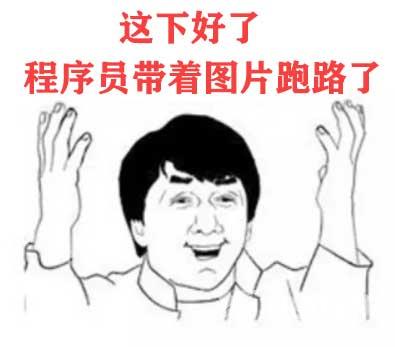
程序使用的图片素材:
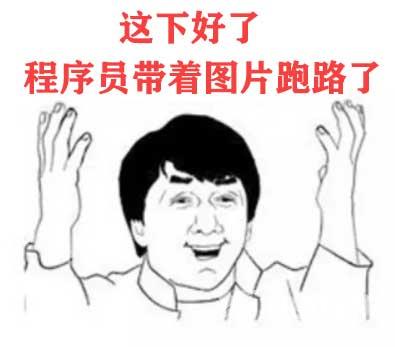

CCLabelBMFont代码段使用的素材是:cocos2d-x安装目录/tests/Resources/fonts/bitmapFontTest3.fnt和对应的png文件
ps:CCMenuItem默认使用的字体是Marker Felt,字体大小是32,在CCMenuItem.h中定义了:
[cpp]view plaincopy #definekCCItemSize32 staticunsignedint_fontSize=kCCItemSize; staticstd::string_fontName="MarkerFelt"; 转载请注明来自:Alex Zhou,本文链接:http://codingnow.cn/android/832.html


 CCLabelTTF:同时也是CCSprite的子类,用来渲染文字标签的,可以指定字体,每次设置字符串内容时都需要重新创建纹理和渲染,性能不好,可以看它的相关源码:
CCLabelTTF:同时也是CCSprite的子类,用来渲染文字标签的,可以指定字体,每次设置字符串内容时都需要重新创建纹理和渲染,性能不好,可以看它的相关源码:


